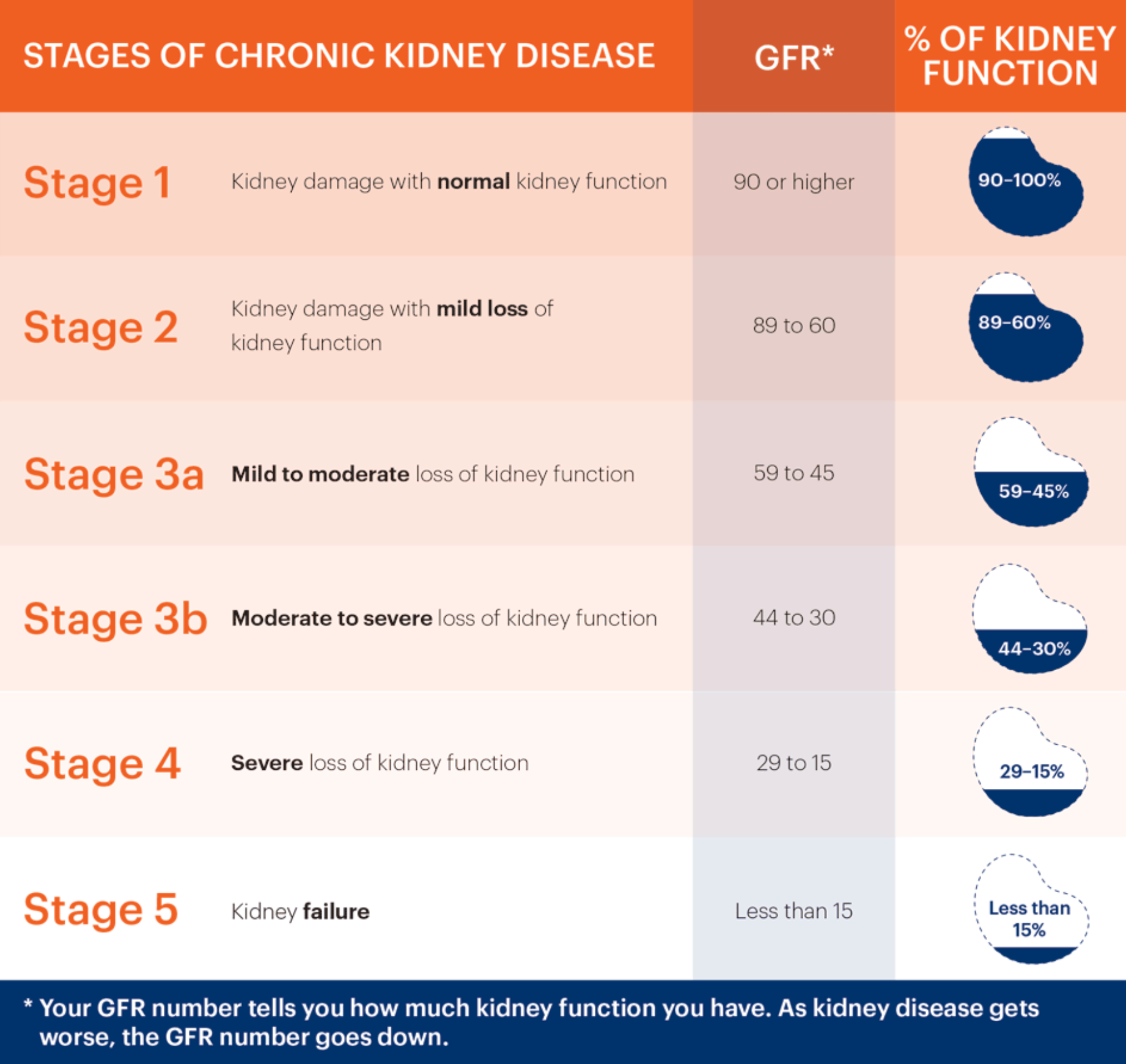Previous studies have studied the relationship between chronic kidney disease (CKD) and retinal nerve fiber layer (RNFL) and ganglion cell-inner plexiform layer (GCIPL) thickness, but findings have been inconsistent. In a new multi-ethnic Asian population study, researchers investigated the association of kidney function status with RNFL and GCIPL thickness and found that compromised kidney function is linked to damage in both structures.
A total of 9,594 Asians eyes from the Singapore Epidemiology of Eye Diseases Study and 87,649 Caucasian eyes from the UK Biobank were included, making this one of the largest studies to date investigating this association, according to the authors.
 |
| Chronic kidney disease and compromised kidney function are associated with thinner RNFL and GCIPL in both Asian and Caucasian eyes, according to this study. Photo: National Kidney Foundation. Click image to enlarge. |
In individuals with CKD and suboptimal kidney function, significant RNFL and GCIPL thinning was observed and was largely consistent across Asian and Caucasian eyes. These findings further support the notion that individuals with CKD may be more susceptible to RNFL and GCIPL thinning, according to the authors, which is an important marker for glaucoma development.
CKD and reduced estimated glomerular filtration rate (eGFR) were associated with thinner peripapillary RNFL in Asian eyes. Similarly, in Caucasian eyes, reduced eGFR was associated with thinner macular RNFL. Consistently, in Asian eyes, the team observed that CKD and reduced eGFR were associated with thinner GCIPL. CKD was also associated with GCIPL thinning in Caucasian eyes.
“Across Asian and Caucasian eyes, when evaluating the different stages of kidney disease, we observed a significant trend between declining kidney function with thinner RNFL and GCIPL,” the authors wrote in their paper for Ophthalmology Science. “Taken together, these findings across Asian and Caucasian eyes further corroborate the overall relationship of kidney function with RNFL and GCIPL thickness.”
The authors found it interesting that RNFL and GCIPL thinning were more prominently observed in Malay and Indian eyes, which could be partially explained by the inherent thinner RNFL and GCIPL profiles in these patients, “thus potentially predisposing them to be more susceptible to retinal microvasculature damage caused by CKD,” they explained in the study.
The association between kidney disease and neuroretinal thinning may be explained by shared structural and pathophysiological mechanisms that affect both the kidney and retina, as both are more vulnerable to microvascular damage from systemic disease. “Additionally, pathogenic mechanisms such as chronic inflammation and oxidative stress have been known to cause injury to retinal and renal layers,” the authors noted in the study.
“Furthermore, given that RNFL and GCIPL thickness are established markers of glaucoma, it is advisable for clinicians to closely observe the pattern of RNFL and GCIPL loss as a means of distinguishing between glaucomatous and CKD-related neuroretinal loss,” they continued. “On this note, individuals with CKD may warrant regular eye examinations.”
Majithia S, Chun Yuen Chong C, Chee Li M, et al. Associations between chronic kidney disease and thinning of neuroretinal layers in multi-ethnic Asian and Caucasian populations. Ophthalmol Sci. June 14, 2023. [Epub ahead of print]. |

